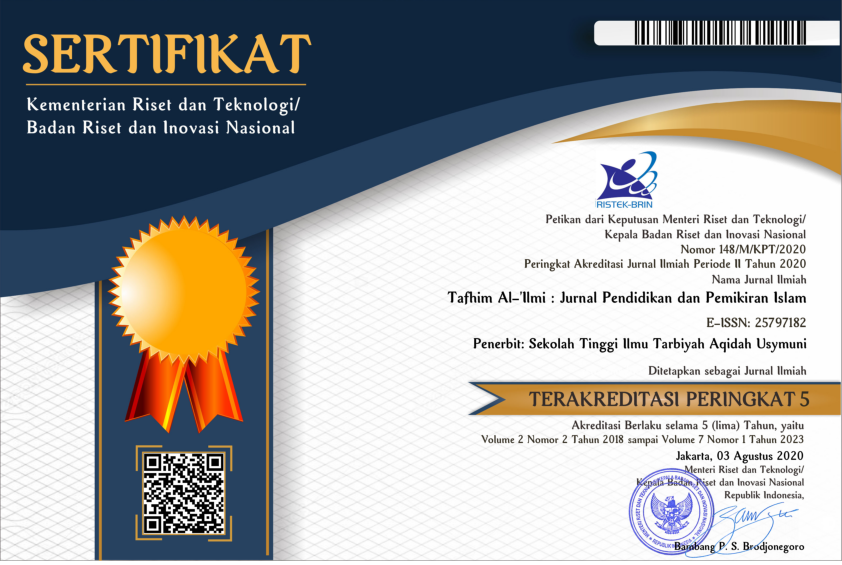Masa Depan Kesarjanaan Pendidikan Guru Madrasah Ibtidaiyah
DOI:
https://doi.org/10.37459/tafhim.v14i1.6029Abstract
AbstactBasic education, in Religious Minister Affairs calls madrasah ibtidaiyah, plays a critical role in holistically developing children in their golden age, which includes attitude, intelligence, and movement or action. Children in elementary school require quality education to create significant cognitive, affective, and spicomotor abilities. This paper was a qualitative study based on library research, with academic literature serving as the primary source. Researchers attempted to explore ideas by reading relevant literature to generate new ideas for providing provisions for prospective teachers at madrasah ibtidayah. The purpose was to generate new ideas that will assist PGMI (teacher traning for madrasaha ibtidaiyah departpent) graduates in becoming individuals who are prepared to face unforeseen challenges. The researh findings are mentioned bellow, The first, PGMI graduates should become dedicated teachers who work totally in training, guiding, teaching and educating pupils in that level. The second is PGMI graduates should be mentally rich to guaranty that that teacher stand independently without expecting to get fee from teacing at madrasas. A devoted teacher has a fierce fighting spirit that does not waver in the face of adversity, such as low salery and limited facilities. Teachers must have a rich mentality to make them not overly reliant on the salaries and facilities provided by madrasas, because private madrasas cannot guarantee the welfare of teachers.Keywords: Future, Bachelor, PGMIDownloads
Published
2023-06-09
How to Cite
Shulhan, S., Ar, S., & Dores, D. (2023). Masa Depan Kesarjanaan Pendidikan Guru Madrasah Ibtidaiyah. Tafhim Al-’Ilmi, 14(1), 1–15. https://doi.org/10.37459/tafhim.v14i1.6029
Issue
Section
Articles
License

This work is licensed under a Creative Commons Attribution-ShareAlike 4.0 International License.
Artikel yang dimuat dalam jurnal ini boleh disebarluaskan, diterbitkan kembali, dengan syarat mencantumkan bahwa artikel tesebut telah dimuat di jurnal Tafhim al-'Ilmi dengan mencantumkan volume, nomor, dan halaman artikel terkait.







